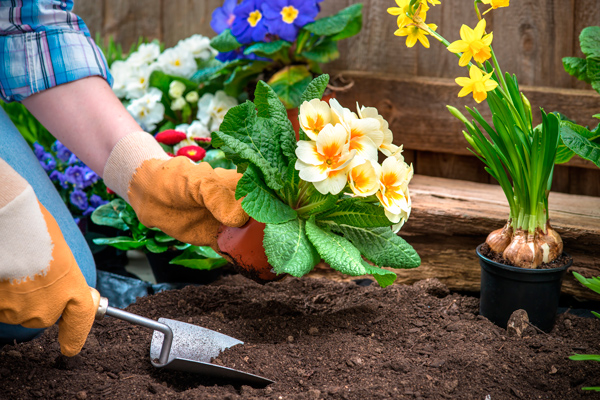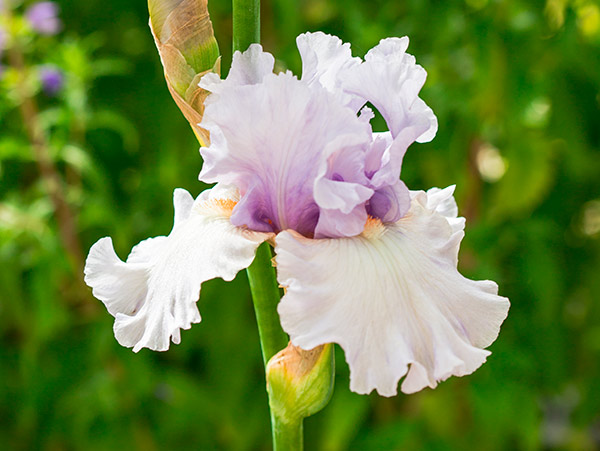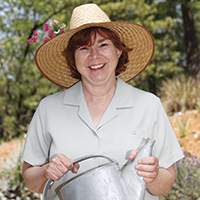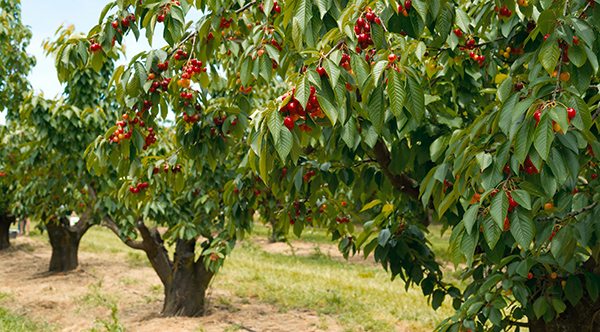Gardening Q&A
-

I'm not going to be able to get my vegetables planted as early as I would like this year. Does that mean it's too late to plant a garden?
Absolutely not! Most California gardeners can't rely on the weather to be reliably mild until late April or early May, and most crops can be planted twice during any season, anyway. If the weather is getting hot by the time you get things planted, be sure to protect the seedlings from the hot afternoon sun until they are established. I use a piece of newspaper perched on top of a stick, or try those black, plastic flats you get from the nursery. They will block enough of the sun so young seedlings don't burn.
For the last two years my tomato plants, all heirloom varieties, have just up and died before the season ends. Entire parts of the plant wilt and turn brown. What's wrong?
It could be something as simple as your plants not getting enough water and the soil needing more organic matter. On the other hand, it could be a type of wilt that affects many tomato plants, especially heirloom varieties.
If you look at the label of hybrid types, it will likely say the plant is resistant to wilts such as verticillium and tobacco mosaic. Unfortunately, although some heirloom varieties are naturally resistant, many are not. If someone who is a smoker handles your tomato plants or smokes in the garden, the tobacco mosaic can become a problem. There is no way to save the plants. Take the entire plant and toss it in the garbage; do not compost the plant.
You might try covering that part of the garden with black plastic, to let the sunshine sterilize the soil. Don't plant your tomato plants in that area for several years. Switch tomato varieties until you find ones that are resistant to the diseases, or plant hybrid tomatoes that have been bred to resist them.
I understand your frustration. It's not an easy fix.
-

Bearded irisAre there any beautiful plants I can put in my sunny garden that are very low water users that maybe need only occasional watering?
Absolutely. But the key is you have to plant early, in the fall or spring, and let them get a good root system growing. The first summer or two they will need regular watering, but you can probably get away with spot watering them once or twice a week. Keep an eye on how the leaves react; if they look droopy or stressed, give the plant some water. Here are a few plants I have in my garden that get no water during the summer, drought or not: lavender cotton (Santolina chamaecyparissus), rosemary, Spanish lavender (Lavandula stoechas), smoke tree (Cotinus coggygria) and bearded iris. One strategy is to plant these sorts of plants farther away from the house and to keep plants that need more care and water closer to the house, thus conserving water in most of the garden while still having beautiful plants to enjoy.
My cedar tree has dozens of little seedlings beneath it. I hate to pull them out and toss them in the compost. Can I transplant them or pot them up for friends?
Yes, absolutely. I would dig them up while the ground is still moist from spring rains, so you get as much of the root system as possible. Use a planting mix that has plenty of compost in it, and you'll likely need to water the pots once a day, perhaps more when it's really hot.
About Pat Rubin, California Bountiful's gardening expert

For Pat Rubin, gardening is more than just dirt and plants. "It's about history, romance, adventure and people," she says. "And it should be fun."
California Bountiful's gardening columnist has lived and chronicled this fun, hands-in-the-dirt approach for years—and for additional publications including Fine Gardening, Pacific Horticulture, Christian Science Monitor, Family Circle and The Sacramento Bee. Pat has also volunteered as a Master Gardener, speaks to garden clubs and appears regularly on gardening radio shows.
Need gardening advice? Ask the expert!
-

I just bought a house with a small orchard: two cherry trees, an apricot, an apple, a plum, a pomegranate and a fig. I read this is the time to prune them, but I don't know where to start. What do I do first?
I found myself in a similar situation with my first house. The problem is that each variety of fruit tree needs to be pruned differently. Apples bear on spurs that produce for many years, so you don't want to prune them off. Peaches need to be pruned to encourage new wood, but you don't want cherry trees to reach for the sky. The list goes on and on.
The best thing to do is get a book about home orchards and take it into the garden with you. It will give you advice on pruning, spraying and general care. In my case, I would go to my apple tree each January, turn to that part of the book and follow the directions. I'd repeat the process with each type of tree and soon I was able to identify fruit trees anywhere simply by their type of bark. After a few years of pruning and taking care of the trees, you'll need the book less and less. But for those first few years, it will be invaluable, and you'll get lots of fruit.
What bulbs can I plant now for spring and summer blooms?
Now is the time to plant daffodils and tulips for spring bloom. Also, plant iris, watsonia, callas, cannas and gladiolus for summer blooms. Then sit back and enjoy!

